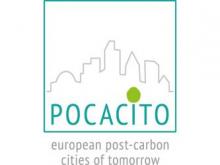The Ecoparc de Barcelona is an ambitious environmental facility which not only treates solid waste from the metropolitan area but aims to reuse and recycle elements through a range of techniques, such as composting and methanization.
Background
Metropolitan Barcelona produces 1.6 million tonnes of solid waste (excluding industrial waste) annually. The idea for the Ecopark emerged in 1998, following the adoption of the Metropolitan Municipal Waste Management Programme (PMGRM). The main objective was a large-scale transition from mere treatement of solid waste to a system which allowed for the recovery of materials and energy resources and the reduction of landfill waste.
Activities
Build between 1999-2001 at a cost of €48 million, Ecoparc de Barcelona is a waste sorting and biotreatment plant for Barcelona and neighboring towns. The plant's main aims are to limit the environmental impact of solid waste treatement, improve plant health and safety conditions, increase production of biogas, increase the production of compost, minimize factory discharges (waste unable to be made use of), minimize the percentage of organic matter in factory discharges and recover the maximum amount of recyclable material possible.
Ecoparc de Barcelona treats two kinds of waste: organic waste from selective collection and undifferentiated waste (residual waste). From the former biogas (methane and carbon dioxide) is produced, which is then used to generate electricity. From the latter recyclable materials (eg. paper and glass) and organic matter (used to make compost) are extracted. Steam is also sold to a local cooling and heating network.
Results
Ecoparc de Barcelona treates approximately 12 percent of solid waste produced in the metropolitan area. From the c. 350,000 tons of solid waste treated per year, it produces 160,000 MWh per year. Around 7.6 tons of steam sold per year to urban heating and cooling network.

